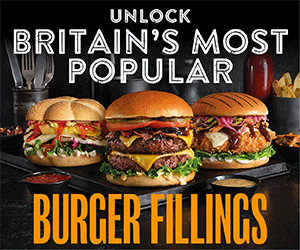Opinion: The future of FMCG

Savanta recently launched BrandVue’s Most Loved FMCG Brands 2022 report, providing insight into which media brands UK adults have the closest emotional connection with. Drawing on its findings, Will Blackett, head of consumer research for Savanta, discusses what the future holds...
One of striking things about the Top 10 List of Most loved FMCG Brands is that most fall into the ‘comfort food’ category. Chocolate, crisps and ice-cream companies comprise eight of the top 10 and, while they are established brands in their own right, they have likely offered a huge amount of solace and familiarity to people during the stress and uncertainty caused by the pandemic. And the science proves it: eating sweet and starchy food helps our bodies make serotonin, which makes us feel calmer and decreases the stress hormone cortisol.
However, as the dust settles on a post-pandemic nation, we are facing further tests, this time to our household’s disposable income, with inflation predicted to peak at record levels in the second half of 2022 and stay high for several years. The war in Ukraine and extended lockdowns in China are having a significant impact on the cost of goods and this will be particularly hard felt by fast-moving consumer goods (FMCG) manufacturers.
As we are seeing, increased costs are being passed onto the consumer, making it a challenge to maintain share and profitability. Therefore, understanding price elasticity will be key. Traditional methods to measure price sensitivity have their limitations in periods of unstable inflation because they typically represent a moment in time.
With inflation, people’s baseline price acceptance changes (i.e. what you found too expensive yesterday is now the minimal price you can get the product for today). To adjust the outputs for inflation you get into in the realm of econometrics, taking into account the inflation percentage rise and the nature of the product tested to adjust the demand curve. While inflation is the main commercial threat to FMCG companies, regulation and evolving customer needs around sustainability are also influencing decision making.
The government’s plan to tackle obesity through its high fat, salt and sugar (HFSS) legislation is being implemented between October 2022 and October 2023, and will impose marketing and promotional restrictions on products deemed ‘unhealthy’. This clearly provides opportunities and challenges to the FMCG industry.
Companies not impacted by HFSS will have more space to promote in-store, so having a clear and compelling ‘category story’ will be important to influence retail decision-making. Conversely, brands most at risk of HFSS, such as chocolate manufacturers, will have to rely on their strong brand equities to drive trade as their mental and physical availability will be reduced significantly.
Customers are also increasingly eco-conscious, and many are choosing brands that are taking active steps to become more sustainable. This is a primary driver of choice for gen Z consumers and is becoming more important for older segments. Sustainable packaging and sourcing, energy efficiency and plant-based alternatives are all areas that brands need to build into the marketing mix to ensure they remain relevant and competitive in the future.
In times of challenge, there is a natural tendency to cut research and development budgets. However, innovation will help FMCG companies navigate the new market dynamic. By understanding customer needs, and developing and testing new products that meet these needs, companies can develop products that drive value, volume and category growth, and provide a platform for opportunities once we return to a period of stability.













